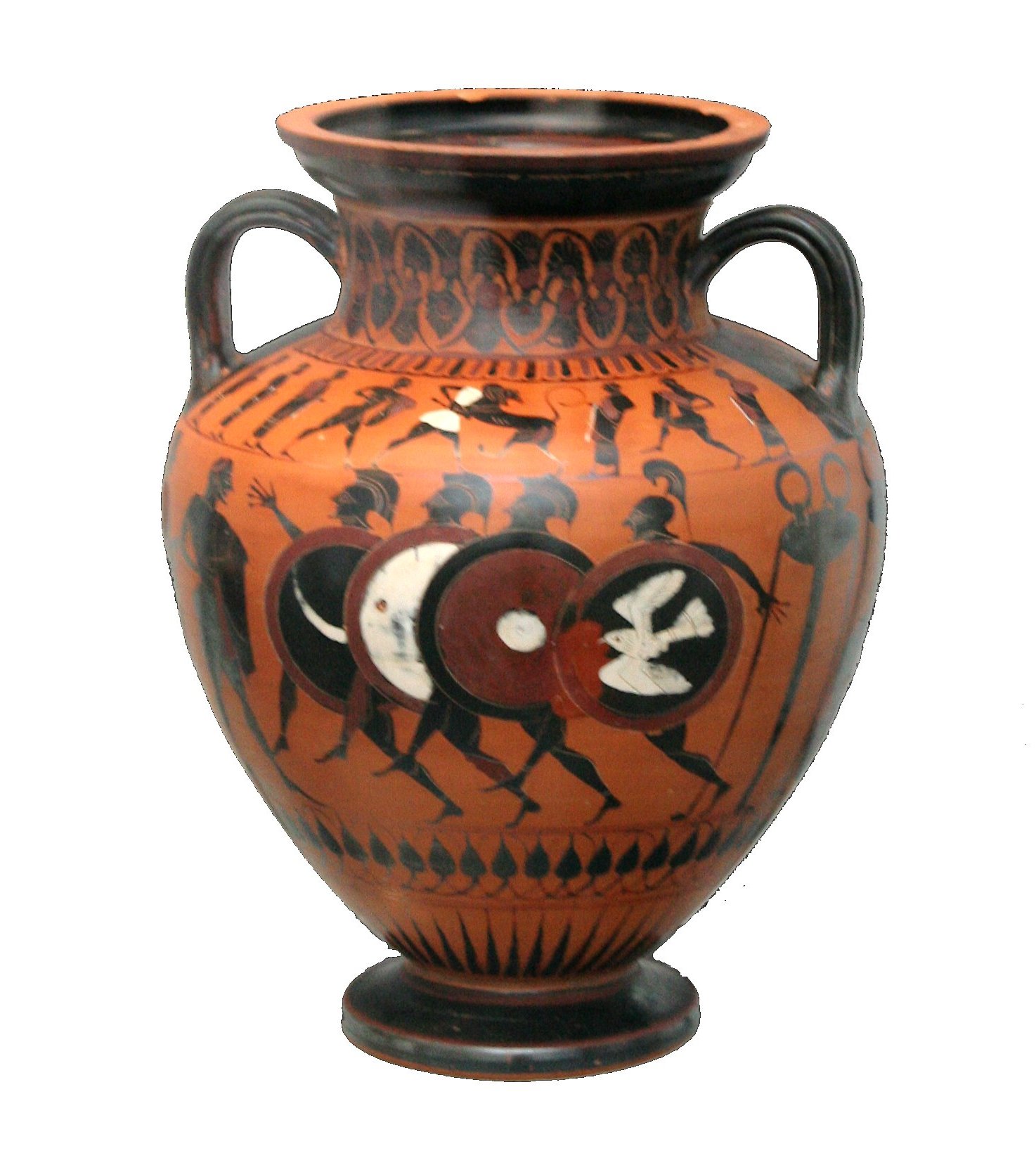Aspis (Argos) on:
[Wikipedia]
[Google]
[Amazon]
 An ''aspis'' ( grc, бЉАѕГѕАќѓѕВ; : aspides, ) or ''porpax'' shield was the heavy wooden
An ''aspis'' ( grc, бЉАѕГѕАќѓѕВ; : aspides, ) or ''porpax'' shield was the heavy wooden
Classical Greek Shield Patterns
Greek shields Ancient Greek military terminology
 An ''aspis'' ( grc, бЉАѕГѕАќѓѕВ; : aspides, ) or ''porpax'' shield was the heavy wooden
An ''aspis'' ( grc, бЉАѕГѕАќѓѕВ; : aspides, ) or ''porpax'' shield was the heavy wooden shield
A shield is a piece of personal armour held in the hand, which may or may not be strapped to the wrist or forearm. Shields are used to intercept specific attacks, whether from close-ranged weaponry or projectiles such as arrows, by means of a ...
used by the infantry in various periods of ancient Greece
Ancient Greece ( el, бЉЩќїќїќђѕВ, Hell√°s) was a northeastern Mediterranean civilization, existing from the Greek Dark Ages of the 12thвАУ9th centuries BC to the end of classical antiquity ( AD 600), that comprised a loose collection of cult ...
.
Construction
An ''aspis'' was deeply dished and made primarily of wood. Some had a thin sheet ofbronze
Bronze is an alloy consisting primarily of copper, commonly with about 12вАУ12.5% tin and often with the addition of other metals (including aluminium, manganese, nickel, or zinc) and sometimes non-metals, such as phosphorus, or metalloids such ...
on the outer face, often just around the rim. The convention was to decorate the shield.
The ''aspis'' measured at least in diameter and weighed about , and it was about thick. This large shield was made possible partly by its shape, which allowed it to be supported comfortably on the shoulder. The revolutionary part of the shield was, in fact, the grip. Known as an ' grip, it placed the handle at the edge of the shield and was supported by a leather or bronze fastening for the forearm at the center, known as the porpax. This allowed hoplites more mobility with the shield, as well as the ability to capitalize on their offensive capabilities and better support the phalanx. The shield rested on a man's shoulders, stretching down to the knees. It was theorized they were designed for a mass of hoplites to push forward into the opposing army, a move called ''othismos
Hoplites ( ) ( grc, бљБѕАќїќѓѕДќЈѕВ : hopl√≠tƒУs) were citizen-soldiers of Ancient Greek city-states who were primarily armed with spears and shields. Hoplite soldiers used the phalanx formation to be effective in war with fewer soldiers. The fo ...
'', and it was their most essential equipment, though this is now an outdated theory. The shield had a convex face, like that of a shallow bowl.
Such shields did not tend to survive the passage of time very well, and only one ''aspis'' has survived into modernity with sufficient preservation to allow us to determine the details of its construction: this shield is called the "Bomarzo" or "Vatican" shield, and it is currently located in the Vatican, within the Museo Gregoriano Etrusco
The Vatican Museums ( it, Musei Vaticani; la, Musea Vaticana) are the public museums of the Vatican City. They display works from the immense collection amassed by the Catholic Church and the papacy throughout the centuries, including several of ...
. It was discovered in 1830 near Bomarzo in Lazio
it, Laziale
, population_note =
, population_blank1_title =
, population_blank1 =
, demographics_type1 =
, demographics1_footnotes =
, demographics1_title1 =
, demographics1_info1 =
, demographics1_title2 ...
, central Italy.
See also
* Ancient Greek warfare *'' Clipeus'' вАУ a similar shield used by the Romans *''Peltast
A ''peltast'' ( grc-gre, ѕАќµќїѕДќ±ѕГѕДќЃѕВ ) was a type of light infantryman, originating in Thrace and Paeonia, and named after the kind of shield he carried. Thucydides mentions the Thracian peltasts, while Xenophon in the Anabasis disting ...
'' вАУ a light infantry
Light infantry refers to certain types of lightly equipped infantry throughout history. They have a more mobile or fluid function than other types of infantry, such as heavy infantry or line infantry. Historically, light infantry often fought ...
man using a lighter ''pelte'' shield
*'' Thyreophoroi'' and '' thorakitai'' вАУ medium infantrymen using '' thyreos'' shields
References
{{ReflistExternal links
Classical Greek Shield Patterns
Greek shields Ancient Greek military terminology